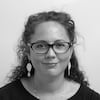Kurt Cobain’s spirit lives on in Seattle, 30 years after his death
In the 1990s, an isolated city in the Pacific Northwest created a global musical movement, ‘grunge.’ EL PAÍS visited Seattle 30 years after the death of Kurt Cobain, the artist who personified this genre. He marked a generation and defined a diverse scene that is still vibrant today

In Seattle, it was difficult to make money and build a musical career. That’s why people who made music weren’t motivated by a commercial spirit, but by a creative one. After all, if nobody’s buying your work, why not say whatever you like?
“In Los Angeles, everyone did things while thinking about becoming a star. In Seattle, it wasn’t possible to be a star,” says Charles R. Cross, a journalist and the author of the Kurt Cobain biography Heavier Than Heaven (2017). Photographer Charles Peterson, author of Screaming Life: A Chronicle of the Seattle Music Scene (1995), mentions another element: “It all arose from isolation. In Seattle, there were musicians, producers, comic book illustrators, writers, photographers. Everyone helped each other… it wasn’t like in New York or Los Angeles, where people were competing to get ahead and impress.”
It was in this context that Kurt Cobain emerged. “He had a special kind of charisma on stage. I never thought he was desperately trying to connect with the audience. You felt like he had a ferocity inside of him and that he was going to bring it out there. He played and performed for himself,” recalls Megan Jasper, the CEO of Sub Pop Records. Those who lived through this period remember Cobain well: he marked a generation. His life and his career with Nirvana were brief, but the impact of the style he personified, “grunge,” put Seattle, the largest city in Washington State (although the capital is Olympia), on the world’s sound map. April of 2024 marked 30 years since his death at the young age of 27, but still, the music in Seattle hasn’t stopped playing.
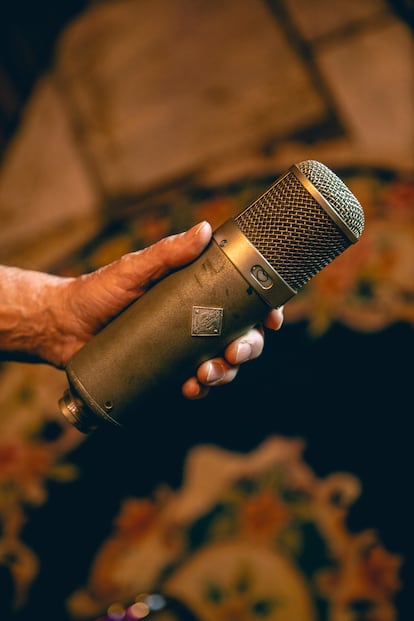
The Central Saloon, located near the ferry terminal, is a legendary venue where Soundgarden, Nirvana and Mother Love Bone used to play. On one wall, there’s a blackboard with the concerts scheduled for the month: there are two or three on an almost daily basis. In May, there are names like Dark Chisme (self-defined on Instagram as a “dark wave” band) or Gully (indie folk and Americana). Both are based in Seattle. “It’s a city where music has always been alive. The scene is very varied. It generates about three or five bands a day… you have to pay attention to social media,” María Reidell says. She knows what she’s talking about: she’s the concert programmer at Easy Street Records.
“Nirvana is Seattle’s label, along with Green River, Soundgarden… any current band from here, Black Tones, Black Ends, La Luz, will say that [those bands] have had an influence on them,” Reidell adds. She decided to emigrate from Mexico City to work in Seattle as a babysitter, because grunge had been the soundtrack of her childhood. At the age of 32, she didn’t grow up in that era, but her uncle listened to the songs all the time.
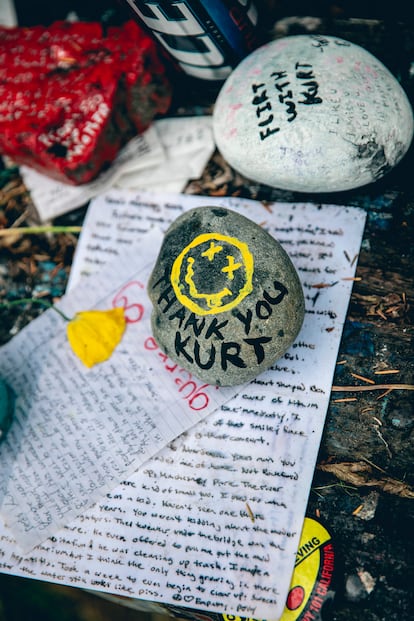
Thunderpussy, a rock band formed in 2014 that presents itself as “the best band in Seattle,” just played in the store. The energy of the after-work rush fills the space. “I feel like grunge turned Seattle into a music city. And, since then, it’s grown to a point where we have our own little slice of the industry. There’s more and more diversity, because there were underrepresented communities that have raised their voices to say: ‘We’re here, we’re doing this,’” says Martin Douglas, host of KEXP, a station founded at the University of Washington. It has long served as a loudspeaker for grunge and continues to support local bands. Nowadays, there’s no dominant sound: the variety of genres rules. There’s the dream pop of Sea Lemon, the hip hop of Shabazz Palaces, the indie of La Fonda, the electronica of Akira Galaxy, the rap of Stass Thee Boss, the punk rock of Wimps…
Of course, the great hits remain, the ones that began to play in the KEXP booths. “Legend has it that Kurt Cobain left the Love Buzz single at the station and, since they didn’t play it, he called from a booth to ask for it. The rest is history,” says Dusty Henry, co-host of the The Cobain 50 podcast on KEXP.
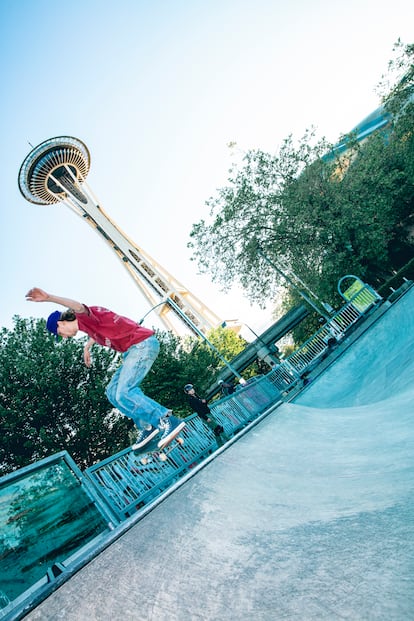
The Seattle sound defined the 1990s. Journalist Mark Yarm recounted that awakening in Everybody Loves Our City: An Oral History of Grunge (2012). In this book, Bruce Pavitt — who, along with Jonathan Poneman, co-founded Sub Pop Records, an independent label that released the first albums by Soundgarden, Nirvana and Mudhoney — wrote that it exploded because “it was an underground culture that had the potential to be very popular.” That port town (known as “Rain City”) suddenly became fashionable: in 1991, Cameron Crowe filmed the movie Singles there, with a grunge Matt Dillon and cameos by Chris Cornell (Soundgarden) and Alice in Chains. In 1993, Nora Ephron released Sleepless in Seattle, a hit starring Meg Ryan and Tom Hanks. Then, in 1994, Jeff Bezos left Wall Street to found his own company, meaning that Amazon was born in the same city where Microsoft was already located. Starbucks also emerged in Seattle, back in the 1970s.
While the neon sign of the Virginia Inn restaurant, which appeared in Singles, remains on a corner of First Avenue, many things have changed. Teslas are now everywhere: the city hasn’t stopped growing and becoming more expensive. In 1990, Seattle had 517,000 residents. Today, the population exceeds 755,000.
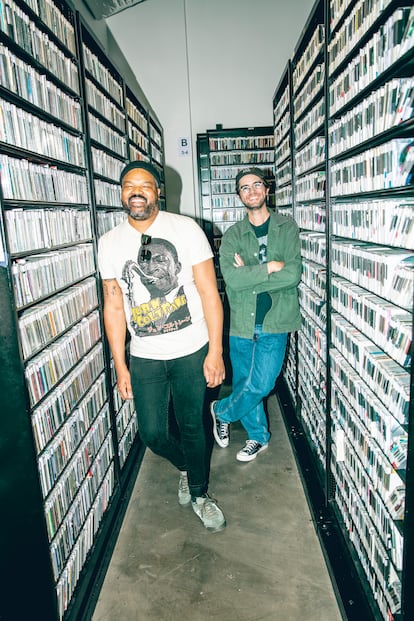
Megan Jasper, the current CEO of Sub Pop Records, moved to Seattle because she was attracted to its creative aura. In 1989, she was on tour with Dinosaur Jr. (the band’s frontman, J Mascis, is a childhood friend of hers) and she met Pavitt and Poneman. “I moved to the city after the tour,” she tells EL PAÍS. “I went to Sub Pop and they asked me if I wanted to be an intern.” A day later, she was the receptionist.
“My first years in the city were incredible. The energy was electric,” she recalls. In her office, the walls are covered with posters, polaroids and stickers. There are gold records, as well as wooden ones (“something we do at Sub Pop when a band sells 100,000 copies,” she explains). There’s also a framed piece of the wall from the old office, with Cobain’s handwritten postal address. After he moved, he often complained that he didn’t get the record label’s newsletters.
Every day, they receive mixtapes from different parts of the world, via audio links. “In the past, we found bands in fanzines, at concerts… but now we can also dive into the black hole of TikTok or Instagram,” Jasper chuckles. Having seen the city and the industry transform, she doesn’t find it likely that another unifying movement like grunge will emerge. “Today, there are lots of people doing many different things.”
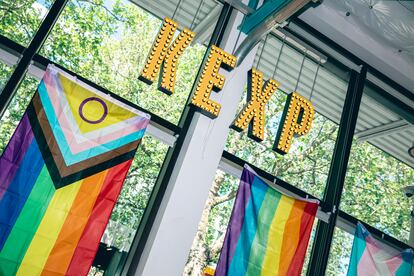
But why did this town and this state, so distant from the usual centers of the American music industry, achieve global fame three decades ago? “In the 1980s, Seattle had the worst music scene in the country,” affirms music journalist Charles R. Cross. “Grunge was a reaction to that. Since no one was interested in what was happening here, people were more creative. In a way, because it seemed impossible, it was possible,” he reflects in a conversation with EL PAÍS. Between 1986 and 2000, he edited The Rocket, a music magazine in the Pacific Northwest. He’s also written the biographies of the two most popular musicians associated with Seattle: Kurt Cobain and Jimi Hendrix (who was born in the city in 1942 and, like Cobain, died at the age of 27). Cross is now putting the final touches on an essay-memoir.
“The Seattle scene wouldn’t have existed with the internet,” he emphasizes. “Nobody applauded at Nirvana’s first concert. If it had been posted on Facebook, the trolls would have attacked them and they would have stopped playing.” For Cross, the absence of the internet is how “one of the last authentic creative music scenes” was forged. Jacob McMurray, the curator of the Seattle-based Museum of Pop Culture (MoPOP), agrees with this thesis. “Grunge emerged in opposition to what was heard on the radio and [seen on] MTV: pop music and hair metal groups. The members of Nirvana looked like their audience: they wore second-hand clothes — because they had no money — and they wrote confusing songs, with which you could create your own mental map. And that was very new, it impressed people.”

McMurray devised MoPOP’s recent exhibit, Nirvana: Taking Punk to the Masses, and would now like to pay tribute to the recently-deceased producer and musician Steve Albini, with whom Nirvana recorded their last album, In Utero. The museum, built by Frank Gehry next to the Space Needle, the 1962 tower that’s become a symbol of Seattle, was promoted by Paul Allen, the co-founder of Microsoft.
At MoPop, you can see a Buddy Holly guitar, Judy Garland’s overalls from The Wizard of Oz, and indie video games. Krist Novoselic, the bassist for Nirvana, and his ex-wife, Shelli Hyrkas, have donated most of the objects in the room dedicated to the band. “[The fact that] Kurt Cobain died at the age of 27 has frozen him in a perfect state of youth and beauty,” McMurray explains. “He wanted this exhibition to be a response to that supernatural Cobain. For a young person around here to see it and say: ‘Maybe I can do something like that, too.’”
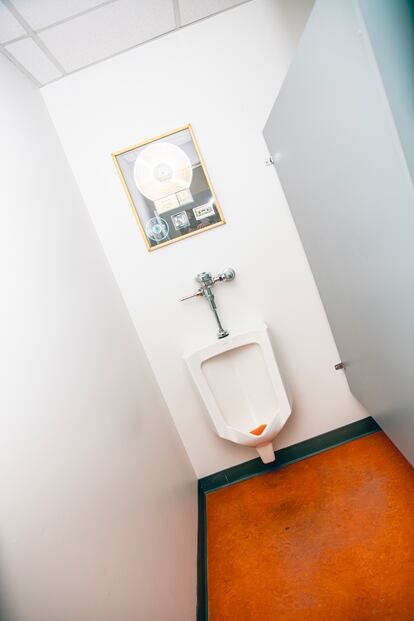
Cobain was a kid without many expectations for the future. He was born in Aberdeen, two hours south of Seattle. Charles Peterson, the photographer who immortalized the grunge era with black-and-white snapshots, remembers it well. “I came from a different background. Aberdeen is quite rural and working-class. Those of us from Seattle went to university and then decided to devote ourselves to grunge.” Peterson says that the first time he went to a Nirvana concert, he only took photos of the other band: Blood Circus. With the flash in one hand and his camera in the other, he mingled with the audience. He didn’t portray rock stars, but rather the atmosphere of the concerts. He also didn’t expect the fame that would come to the singer. “It changed Kurt Cobain, just like it changes anyone… especially if you’re not ready. It was too much, too soon.” He evokes the singer as someone who was joking and ironic and, at the same time, calm and shy. “I think the drugs made him more outgoing,” Peterson notes
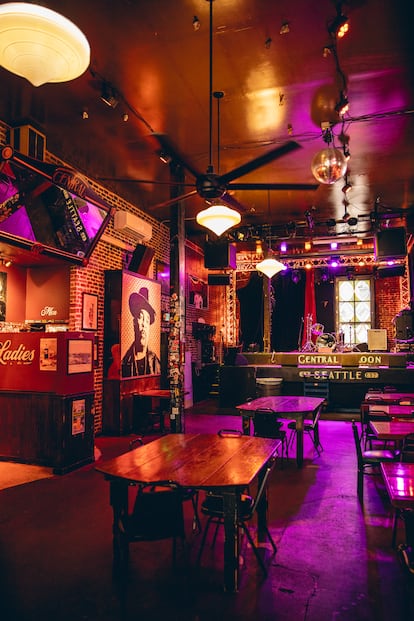
The artist’s relationship with drugs has been written about extensively. He used heroin and suffered several overdoses. Cross, who analyzed these addictions in depth to write his biography, believes that they’ve been too closely linked to the singer’s persona. “I think that the chronic pain suffered by Kurt, who had stomach and back problems, is often underestimated when telling his story. This explains why he chose to take medication.” The author wrote these reflections on a visit to Robert Lang’s home-studio in the picturesque Shoreline neighborhood of Seattle. There, at the end of January, in 1994, Cobain was recording You Know You’re Right, which would end up being Nirvana’s last song. Was it meant to germinate into the band’s fourth album? Nobody knows.
Lang tells EL PAÍS a thousand stories. In his 50-year-long career, he’s had the Foo Fighters, Heart, Eddie Vedder, Kenny G and Liz Phair as clients. He worked at Boeing, but left to excavate the underground music scene in his cave-like studio. “Krist and Dave [Grohl, Nirvana drummer] arrived on Friday, but Kurt wasn’t picking up the phone, we didn’t know if he was coming. On Sunday, he showed up,” Lang recalls. “He had a [laugh], we ate pizza…”
“His back hurt, he lay down on the marble floor, as if he were meditating. And then, he recorded. It was quick, an hour or so… some bands can spend three days with the vocals.” Lang doesn’t forget all of Nirvana’s gold and platinum records. “I still see people wearing their t-shirts. Kurt has surpassed all the greats. What a poet. That guy touched your heart.”

KEXP’s Martin Douglas felt a strong connection with the musician as a teenager. “I grew up in North Carolina. I was a sad kid. What he communicated with his music got to me,” he remembers. “He believed that someone should speak up when things were wrong. Kurt did that.” Cobain asked that racists not buy his records. Along with L7, Nirvana played in 1991 at Rock for Choice to support abortion rights. The singer also entered the Riot Grrrl feminist punk movement in Olympia when he dated Tobi Vail, from Bikini Kill. “Kurt led with his values. He challenged sexist and homophobic people. He opened minds,” emphasizes the CEO of Sub Pop Records. “His solid stance of support for women and the LGBTQ+ community made him a fundamental ally,” says Albina Cabrera, a KEXP host who, in the Spanish podcast El Cancionero de Kurt, has reviewed the albums that marked Cobain and his influence on Latin American bands.

Despite his complicated relationship with his wife, Courtney Love, which was marked by addictions, the surroundings of the house where they lived in the exclusive Denny-Blaine neighborhood have become a place of worship. The home is hidden behind vegetation and the greenhouse over the garage where Cobain was found dead no longer exists. “The police said they believed that Mr. Cobain, the lead singer, guitarist and songwriter for the influential band Nirvana, killed himself with a single shotgun blast to the head. A note was found next to Mr. Cobain’s body, which was discovered by an electrician,” announced The New York Times on April 9, 1994. The investigation decreed that he died on April 5.
Next to the house, in Viretta Park, there’s a bench where fans and curious people come to remember him. Rocío Hasperué Méndez, an Argentine resident of Los Angeles who’s been a member of several bands, visits the park every time she travels to Seattle. She even got married there.
In a chat with EL PAÍS, Rocío raises doubts about the singer’s death. “The conspiracy theory that he didn’t kill himself is still around, 30 years later.” She claims that Cobain has guided her through her life. “I lived [in Seattle] for eight years. I came because I dreamed about him, he told me to pick up the guitar and I bought a Fender Stratocaster. I come to the bench to write poetry, to ask [him things]… he had a very genuine sensitivity.”
That’s one of the reasons why he continues to influence those who couldn’t see him live, acknowledges Elijah Perry, a man in his twenties from Portland, who makes music under the name Ramona. He wanted to visit the bench one Saturday afternoon: “Ironically, he used the media to overthrow the system. He put the spotlight on independent music. The effects are still seen today.”
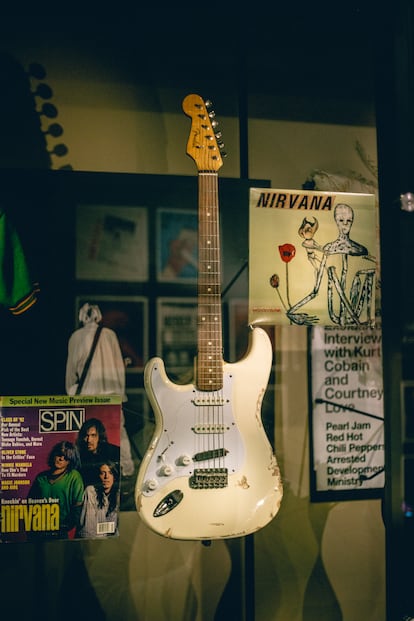
Those who remember Cobain confirm this. That spirit of rupture and doing what you want, which Cobain and grunge embodied, hasn’t been lost in Seattle. The ideology that Thunderpussy shares on its website maintains that essence, 30 years later: “Through music, performance and community engagement we hope to embody the change we want to see in the world, encourage others to question the status quo, and break down walls of separation.”
Sign up for our weekly newsletter to get more English-language news coverage from EL PAÍS USA Edition
Tu suscripción se está usando en otro dispositivo
¿Quieres añadir otro usuario a tu suscripción?
Si continúas leyendo en este dispositivo, no se podrá leer en el otro.
FlechaTu suscripción se está usando en otro dispositivo y solo puedes acceder a EL PAÍS desde un dispositivo a la vez.
Si quieres compartir tu cuenta, cambia tu suscripción a la modalidad Premium, así podrás añadir otro usuario. Cada uno accederá con su propia cuenta de email, lo que os permitirá personalizar vuestra experiencia en EL PAÍS.
¿Tienes una suscripción de empresa? Accede aquí para contratar más cuentas.
En el caso de no saber quién está usando tu cuenta, te recomendamos cambiar tu contraseña aquí.
Si decides continuar compartiendo tu cuenta, este mensaje se mostrará en tu dispositivo y en el de la otra persona que está usando tu cuenta de forma indefinida, afectando a tu experiencia de lectura. Puedes consultar aquí los términos y condiciones de la suscripción digital.
More information
Archived In
Últimas noticias
Most viewed
- Oona Chaplin: ‘I told James Cameron that I was living in a treehouse and starting a permaculture project with a friend’
- Reinhard Genzel, Nobel laureate in physics: ‘One-minute videos will never give you the truth’
- Sinaloa Cartel war is taking its toll on Los Chapitos
- Why the price of coffee has skyrocketed: from Brazilian plantations to specialty coffee houses
- Silver prices are going crazy: This is what’s fueling the rally
